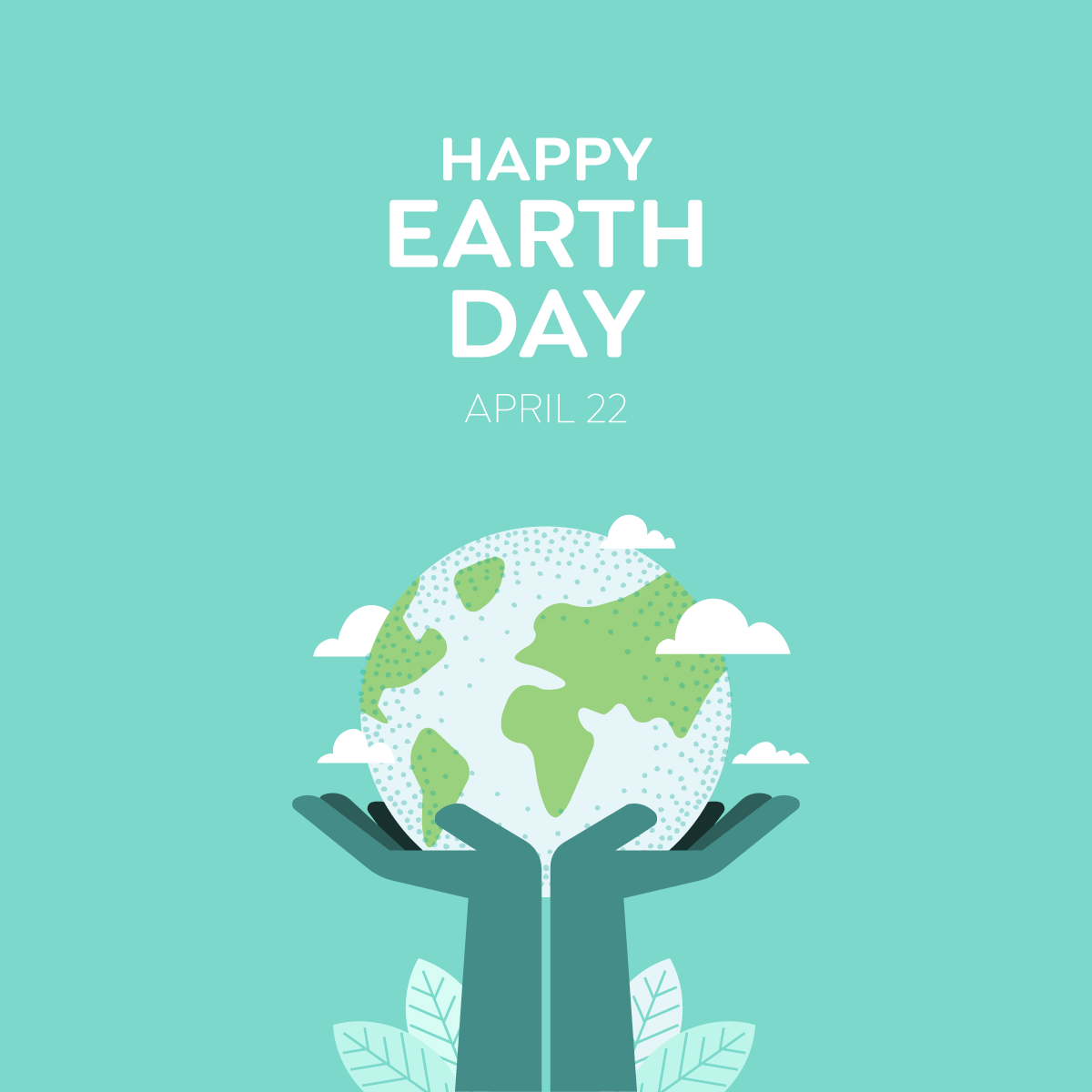Earth Day, celebrated annually on April 22, was first established in 1970 to raise awareness about environmental issues and the need to protect our planet. Over the decades, Earth Day has evolved into a global movement, inspiring millions to take action in their communities, schools, and homes. Understanding and protecting the Earth is more important than ever, and one of the best ways to foster a love for the environment in children is through books written by real scientists. These seven exceptional books provide expert knowledge in an engaging format while inspiring young readers to become stewards of the natural world.
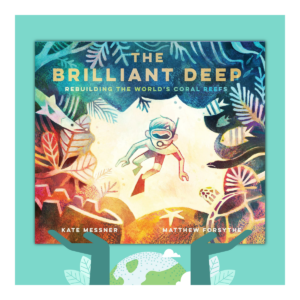 1. The Brilliant Deep: Rebuilding the World’s Coral Reefs by Kate Messner & Matthew Forsythe
1. The Brilliant Deep: Rebuilding the World’s Coral Reefs by Kate Messner & Matthew Forsythe
This beautifully illustrated book tells the story of Ken Nedimyer, a marine scientist who pioneered coral reef restoration. Readers learn about the importance of coral reefs and how humans can help protect them. Kate Messner, a former teacher, is known for her ability to make science accessible, and she worked closely with scientists, including Ken Nedimyer, to ensure accuracy. This story inspires children to believe in the power of individual action and scientific innovation.
Environmental Impact: The book highlights the threats facing coral reefs, such as climate change, pollution, and ocean acidification, and introduces solutions like coral farming and reef restoration. It emphasizes the delicate balance of marine ecosystems and the interconnectedness of ocean health with global environmental stability. By showcasing real-world scientific work, the book encourages readers to explore careers in conservation and marine biology.
Classroom Activities: Students can research different types of coral and create a model of a coral reef. They can also conduct a water quality test on local streams or ponds and discuss how pollution affects marine life. Younger students might enjoy creating coral-inspired art projects while older students can examine how climate change affects reef bleaching.
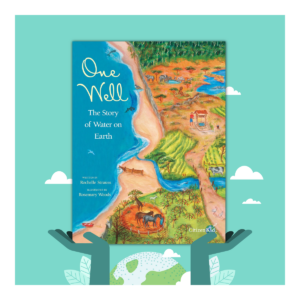 2. One Well: The Story of Water on Earth by Rochelle Strauss & Rosemary Woods
2. One Well: The Story of Water on Earth by Rochelle Strauss & Rosemary Woods
This book explores how water connects all living things and explains the importance of conservation. It provides insights into how water is used globally and the challenges of water scarcity. Rochelle Strauss, an environmental educator and writer, specializes in making complex science topics engaging for children. The book combines vibrant illustrations with important facts to empower children to become guardians of Earth’s most precious resource.
Environmental Impact: “One Well” encourages readers to see water as a shared resource and understand how pollution, climate change, and overuse affect the global water supply. It raises awareness about the lack of access to clean water in many communities around the world. The book fosters empathy and responsibility, urging readers to take part in global efforts to preserve and protect water.
Classroom Activities: Students can create a water cycle diagram, track their water usage for a week, or design solutions for water conservation in their communities. Classroom discussions can focus on global water issues and ways students can reduce water waste at home and school.
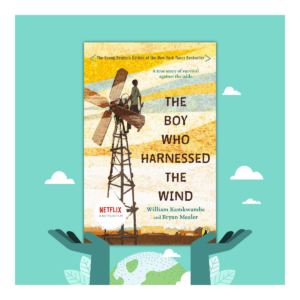 3. The Boy Who Harnessed the Wind by William Kamkwamba & Bryan Mealer
3. The Boy Who Harnessed the Wind by William Kamkwamba & Bryan Mealer
This inspiring true story follows William Kamkwamba, a Malawian teenager who built a windmill from scrap materials to bring electricity to his village. Kamkwamba, who later became a scientist and TED speaker, shares how determination and curiosity can lead to life-changing innovations. The story reminds children that even in the face of adversity, ingenuity and perseverance can light the way.
Environmental Impact: The book emphasizes renewable energy and how individuals can create innovative solutions to address environmental challenges. It introduces readers to concepts like wind energy, sustainability, and engineering for social good. Kamkwamba’s story also brings attention to the global need for clean, affordable energy sources and the potential of youth-led innovation.
Classroom Activities: Students can build simple wind turbines or research renewable energy sources in their own communities. Classes can compare different forms of renewable energy and explore which ones might work best in different geographic regions. Students can also present inventions to solve energy issues in underserved areas.
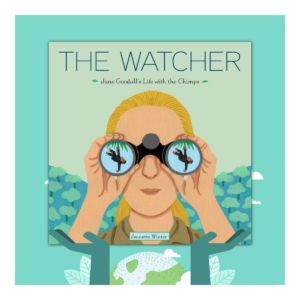 4. The Watcher: Jane Goodall’s Life with the Chimps by Jeanette Winter
4. The Watcher: Jane Goodall’s Life with the Chimps by Jeanette Winter
This biography introduces children to Jane Goodall’s groundbreaking work studying chimpanzees and her lifelong dedication to conservation. Author Jeanette Winter, known for focusing on change-makers in her writing, brings Goodall’s quiet observation and scientific discoveries to life. The book celebrates the idea that great change can come from patient, thoughtful attention to the natural world.
Environmental Impact: The book highlights the importance of conservation, ethical research, and protecting animal habitats. It introduces young readers to the challenges of deforestation and the need for habitat preservation. By following Goodall’s life journey, students learn the impact of long-term scientific observation and advocacy for nonhuman species.
Classroom Activities: Students can observe animal behavior in their local environment or create a campaign to protect endangered species. They can also explore the basics of primate biology or map the ecosystems where chimpanzees live. Classroom discussions can include ethics in animal research and the power of individual advocacy.
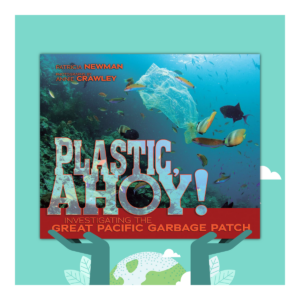 5. Plastic, Ahoy!: Investigating the Great Pacific Garbage Patch by Patricia Newman
5. Plastic, Ahoy!: Investigating the Great Pacific Garbage Patch by Patricia Newman
This nonfiction book follows a team of scientists investigating the impact of plastic pollution in the ocean. Author Patricia Newman collaborates with scientists to write STEM-focused books for children that spotlight real-world problems and solutions. The investigative approach in this book shows readers how science helps uncover critical environmental issues.
Environmental Impact: “Plastic, Ahoy!” raises awareness about ocean pollution and the importance of reducing plastic waste. It reveals the far-reaching consequences of disposable plastics and microplastics on marine ecosystems. By showcasing real research and data collection, the book demonstrates the role of science in protecting the oceans and inspires youth to seek sustainable alternatives.
Classroom Activities: Students can conduct a plastic audit in their school, create posters to promote waste reduction, or design inventions to reduce plastic use. They might also simulate how plastics travel through waterways or investigate biodegradable alternatives to common items. Discussions can explore the lifecycle of plastic and its environmental footprint.
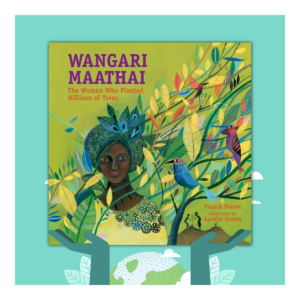 6. Dr. Wangari Maathai: The Woman Who Planted Millions of Trees by Franck Prévot
6. Dr. Wangari Maathai: The Woman Who Planted Millions of Trees by Franck Prévot
This book tells the inspiring story of Wangari Maathai, the Kenyan scientist and activist who founded the Green Belt Movement and won a Nobel Peace Prize. Written by Franck Prévot, a French author passionate about environmental and social justice, the story brings Maathai’s scientific expertise and activism to life. It encourages young readers to connect science, leadership, and community action.
Environmental Impact: The book showcases how tree planting can combat deforestation and climate change while empowering communities. It connects reforestation with soil health, biodiversity, and sustainable agriculture within this global movement.
Classroom Activities: Students can plant trees in their schoolyard, write persuasive essays about deforestation, or start a classroom garden. Teachers can lead discussions on carbon sequestration and its role in reducing global warming. Older students can research environmental movements led by women around the world.
 7. The Story of Climate Change: A First Book About How We Can Help Save Our Planet by Catherine Barr & Steve Williams
7. The Story of Climate Change: A First Book About How We Can Help Save Our Planet by Catherine Barr & Steve Williams
This book provides an accessible introduction to climate change, explaining the science behind it and ways to mitigate its effects. Co-author Catherine Barr, an environmental scientist and former Greenpeace campaigner, draws on her expertise to explain how the Earth’s systems are changing. With vibrant illustrations and hopeful messaging, this book empowers children to be part of the solution.
Environmental Impact: The book helps children understand the urgency of climate action and offers practical solutions for reducing carbon footprints. It covers global warming, fossil fuels, extreme weather, and environmental justice. By connecting individual choices to global outcomes, it shows that everyone has a role in combating climate change.
Classroom Activities: Students can conduct climate experiments, such as measuring carbon dioxide levels, or brainstorm eco-friendly school policies. They can create climate change timelines or map climate impacts in different parts of the world. Classrooms might also start a carbon footprint reduction challenge.
Spending time with books like these not only helps children understand environmental issues but also empowers them to take action. By learning from scientists who have dedicated their lives to studying and protecting the Earth, young readers can be inspired to become future environmental leaders and to start making a difference in their communities.


